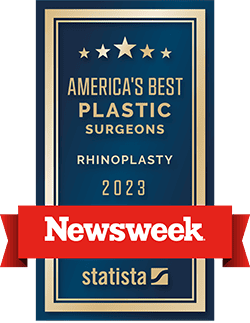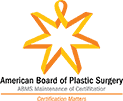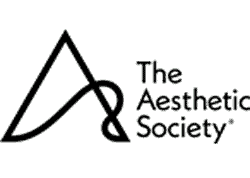
Ethnic rhinoplasty refers to a popular type of nose surgery that is tailored to address the unique characteristics of individuals from various ethnic backgrounds. The goal of this procedure is to enhance or refine the appearance of the nose while still maintaining the patient’s ethnic identity.
For example, individuals of African, Asian, or Hispanic descent may have wider or flatter noses with broader nostrils and thicker skin, while those of European or Middle Eastern descent may have more prominent bridges or sharper nasal tips. Dr. Totonchi aims to take these differences into account to create a more harmonious and balanced face.
Keep reading to learn about some common ethnic rhinoplasty treatments Dr. Totonchi is well versed in providing his patients at Totonchi Plastic Surgery.
African American Ethnic Rhinoplasty
Rhinoplasty is becoming increasingly popular among the African American population. Common aesthetic concerns of the African American nose include:
A wide dorsum, ill-defined tip, decreased tip projection, alar flaring (nostrils), and diminished nasal height and length.
Dr Totonchi appreciates the ethnic concept of beauty and nasofacial harmony to create an aesthetic balance in treating African American rhinoplasty patients. The goal to be met for rhinoplasty on African American noses is to achieve harmony and balance, with a narrower, straight dorsum, increased height, better tip projection and definition, while reducing nasal flaring. Nasofacial harmony is the ultimate goal of any surgical plan.
Challenges when working with the African American nose are that the skin is thick, sebaceous, and inelastic, making it difficult to obtain a well-defined tip. Choosing a rhinoplasty plastic surgeon who is skilled in ethnic noses is imperative to be able to achieve your goal.
Middle Eastern Ethnic Rhinoplasty

The Middle Eastern nose often demonstrates a high dorsum, ill-defined or dependent, droopy nasal tip, prominent dorsal hump and often an obvious nasal or septal deviation.
Dr Totonchi appreciates the ethnic concept of beauty and nasofacial harmony to create an aesthetic balance in treating Middle Eastern rhinoplasty patients. The goal to be met for rhinoplasty on the Middle Eastern nose is to achieve harmony and balance, this is achieved by a reduction in dorsal height, a reduction in dorsal hump, correction of septal deviations, narrowing and defining the nasal tip and defatting of the soft tissue of the tip, and correcting asymmetry of the nares.
Challenges, when working with the Middle Eastern nose, are that the skin is thick, sebaceous, and redundant, making it difficult to achieve fine definition. Choosing a plastic surgeon who is familiar and has experience in ethnic noses is crutial to be able to achieve your aesthetic goals.
Asian Ethnic Rhinoplasty

Asian rhinoplasty patients frequently desire augmentation to the dorsum of the nose with added projection of the tip. Typically, Asian noses have relatively week structural support and thick overlying skin tissue.
The goal to be met for rhinoplasty on the Asian nose is to achieve harmony and balance, this is achieved by tip refinement and creating dorsal height. Implants or cartilage grafts are generally needed to create both dorsal height and tip projection. Cartilage grafts are taken from the septum, ear or costal cartilage(ribs). Dr. Totonchi’s preference in Asian rhinoplasty is rib graft to achieve dorsal height.
Challenges when working with the Asian nose, are generally associated with the complications that can arise with the harvest of the cartilage graft used for augmentation. Choosing a plastic surgeon who is skilled in ethnic noses is imperative to be able to achieve your aesthetic goal.
When it comes to function, rhinoplasty can help resolve airway and breathing issues and in turn provide tremendous relief to those who cannot breathe properly due to dysfunctional nasal anatomy. The most common plastic surgery procedure associated with correcting airway issues due to a deviated septum is a septoplasty. The septum is composed of bone and cartilage which separates the left and right nares. When the septum is deviated, difficulties in breathing can occur. Septoplasty involves surgically correcting the deviation in order to increase nasal airflow. Turbinate reduction can also be done at the same time, if indicated, to increase air movement through the nares.
Schedule a Consultation with Dr. Totonchi
Many patients have a combination of aesthetic and functional nasal concerns that they seek to correct when undergoing rhinoplasty surgery. During the consultation, Dr Totonchi will talk with you and create a customized surgical plan, based on your individual aesthetic and functional concerns, and desired outcome.
It is important to note that ethnic rhinoplasty requires a high level of skill and experience on the part of the surgeon, as well as an understanding of the cultural nuances of the patient’s ethnic background. Patients considering ethnic rhinoplasty should choose a surgeon like Dr. Totonchi who has extensive experience in performing this type of surgery and who is sensitive to the cultural and ethnic aspects of their identity.



















